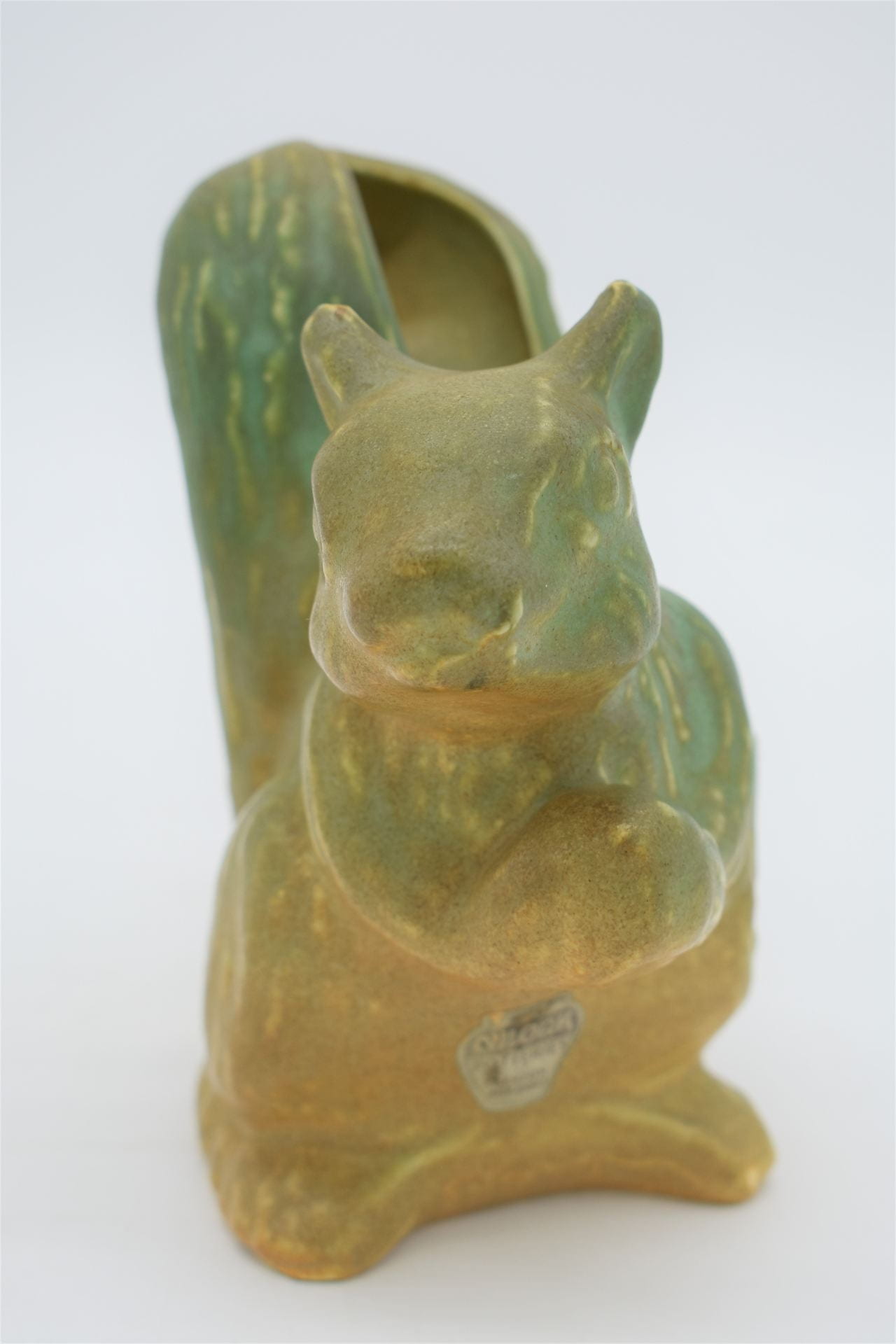The dedication we put into what we’re passionate about in life shines through in these objects, from being a shoe collector to working towards a degree.
Dedication and Passions
Niloak Vase
Early 20th Century
U of A Museum Collections
This 6.5 inch vase was made by Niloak Pottery, a nationally recognized ceramics company that started in Benton, Arkansas. The name originates from the locally sourced kaolin clay used in production and simply spelled backwards.
Co-Curator Lauren Stephens: I chose this vase because it is so cute, but also it is an example of the talent that Arkansas has to offer.
Red Sequined Sneakers
21st Century
Personal Collection of Lane Lunsford
One of the main ideas taught in this course is that objects have their own histories, and this pair of sneakers is no exception.
They were, most recently, found in a flea market and added to a well-loved collection. Originally, however, they were intended for a different purpose altogether. Balera, the shoes’ brand, makes dancewear, and, along with the usual ballet and jazz shoes, they sell a selection of sneakers meant to dance in. What happened between these sneakers being made by a dancewear company to them ending up in the flea market where they were found is a mystery, but it’s a nice thought, that the shoes were originally meant to help make art.
Co-Curator Lane Lunsford: I personally have always loved clothes. One of my favorite things to do is put together outfits, and I always feel better when I’m wearing something I think looks nice, as opposed to something I just threw on. I’ve also always been a collector, and one of my collections is shoes. I’m not actually sure what my current total count is (at least 15 pairs), but these sneakers are a highlight of my collection. They are also connected to me through dance. When I was a little kid, I did dance for years. I quit when I was still very young, well before ever finding these shoes, and I only recently discovered that these sneakers were dance shoes, but it still feels full-circle to me.
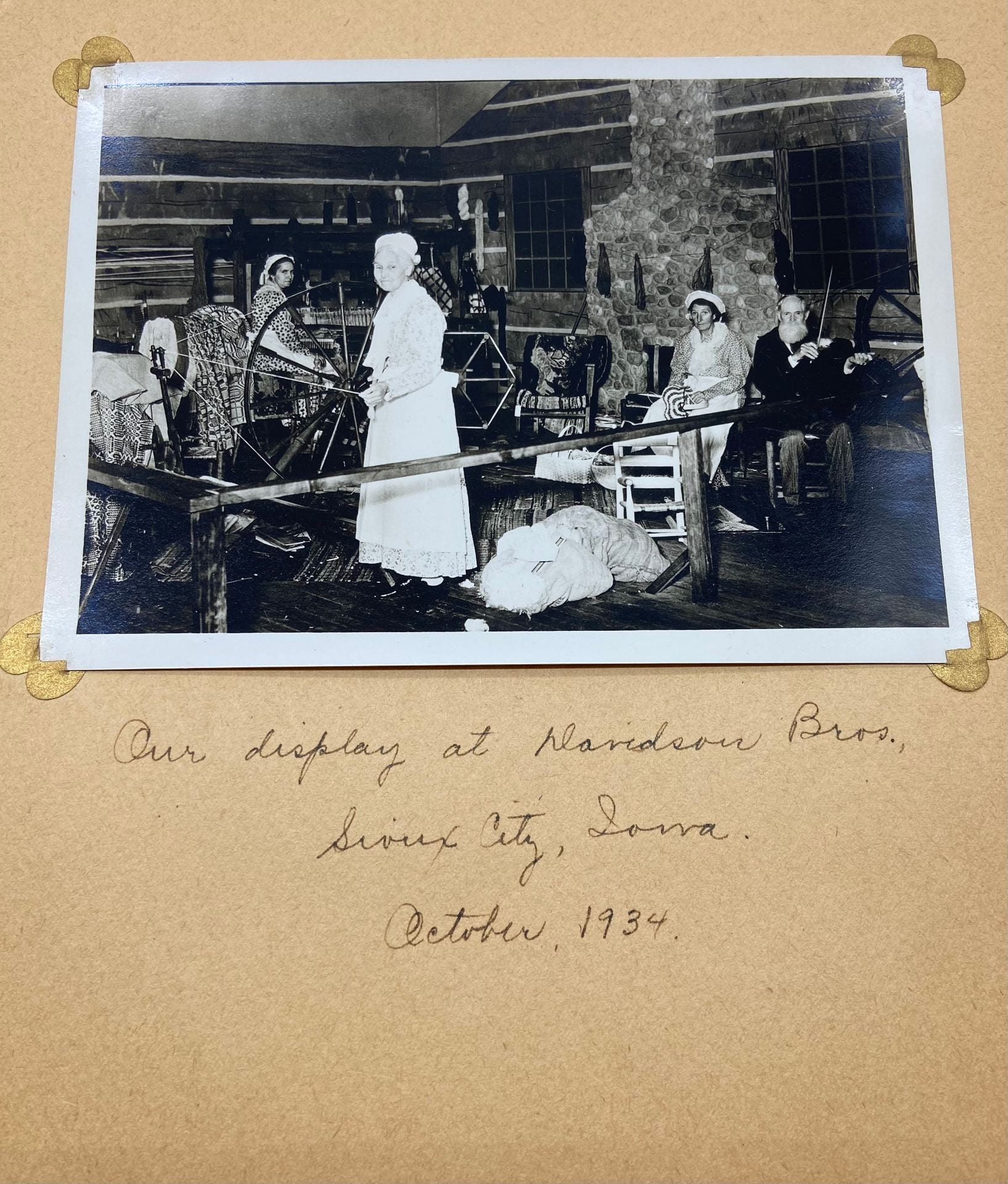
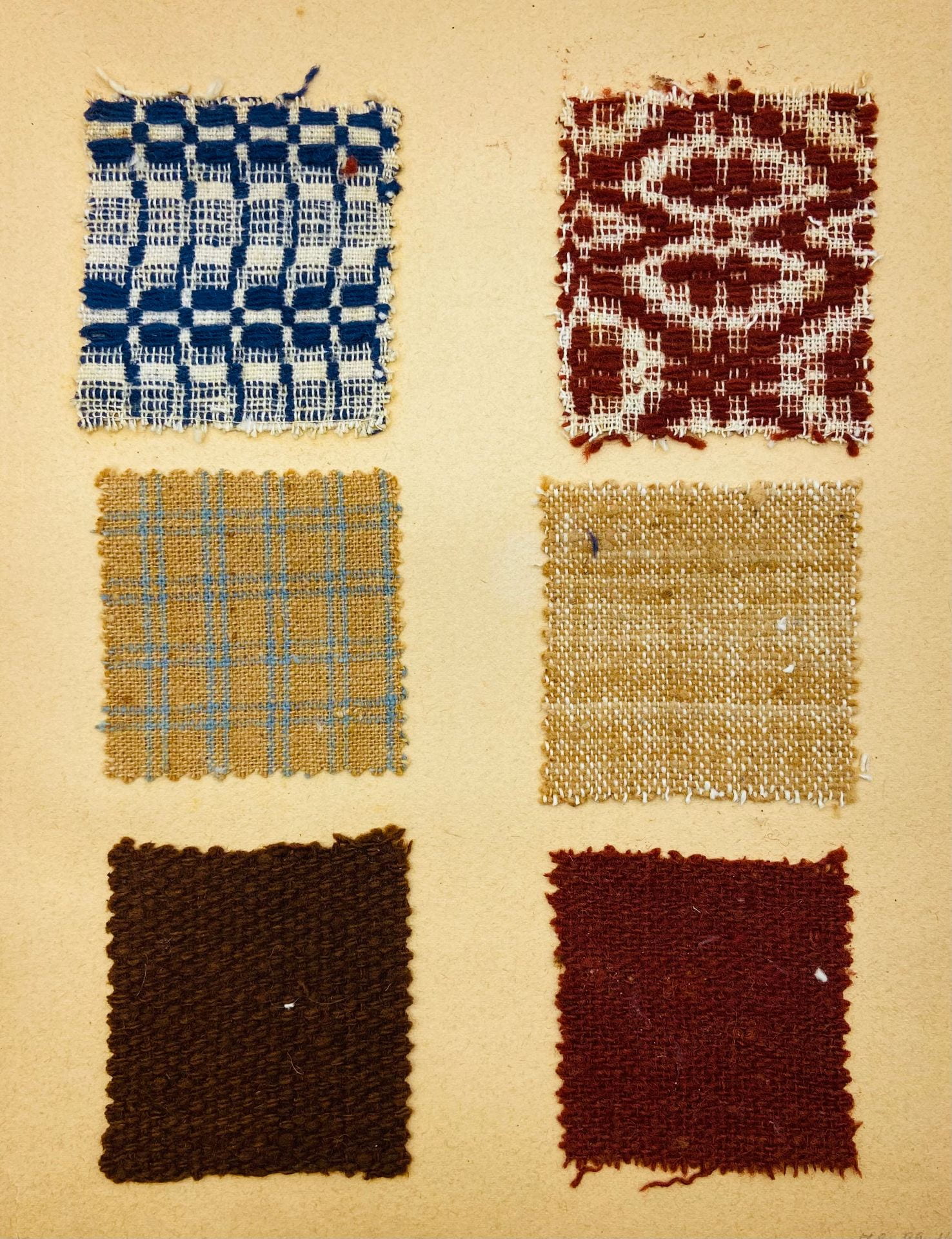
Scrapbook
1930s
U of A Museum Collections
In the 1930s, Ozark Mountain Crafts was founded and directed by Elizabeth French Moore in Fayetteville. The samples on the left are examples of hand-spun fabrics created by the handicrafts house. They attended and fairs and displayed their work all over, as shown by the photograph adjacent. The display shown was in Iowa in 1934.
Co-Curator Ella Scurlock: I believe these homemade crafts beautifully highlight the unique community identity we have in Fayetteville. Being a college town, Fayetteville and the surrounding Northwest Arkansas area is home to people from all over the country and the world. This being so, it would be natural for the Fayetteville community to not be involved. However, this is not the case. Groups like the Ozark Mountain Crafts can be found all over, sharing their passions and hobbies with the rest of the community. I have had the opportunity during my stay in Fayetteville to immerse myself into this community, and it is truly one of a kind. The passion and care that goes into the work people do here, as displayed in the beautiful handiwork of these craftsmen and women, inspire the community and connect us all together, even those of us not from here. Not only can we find our identity and connection to each other in our own passions, but we can discover what makes our identity through the passions and work of others that we share out space with.
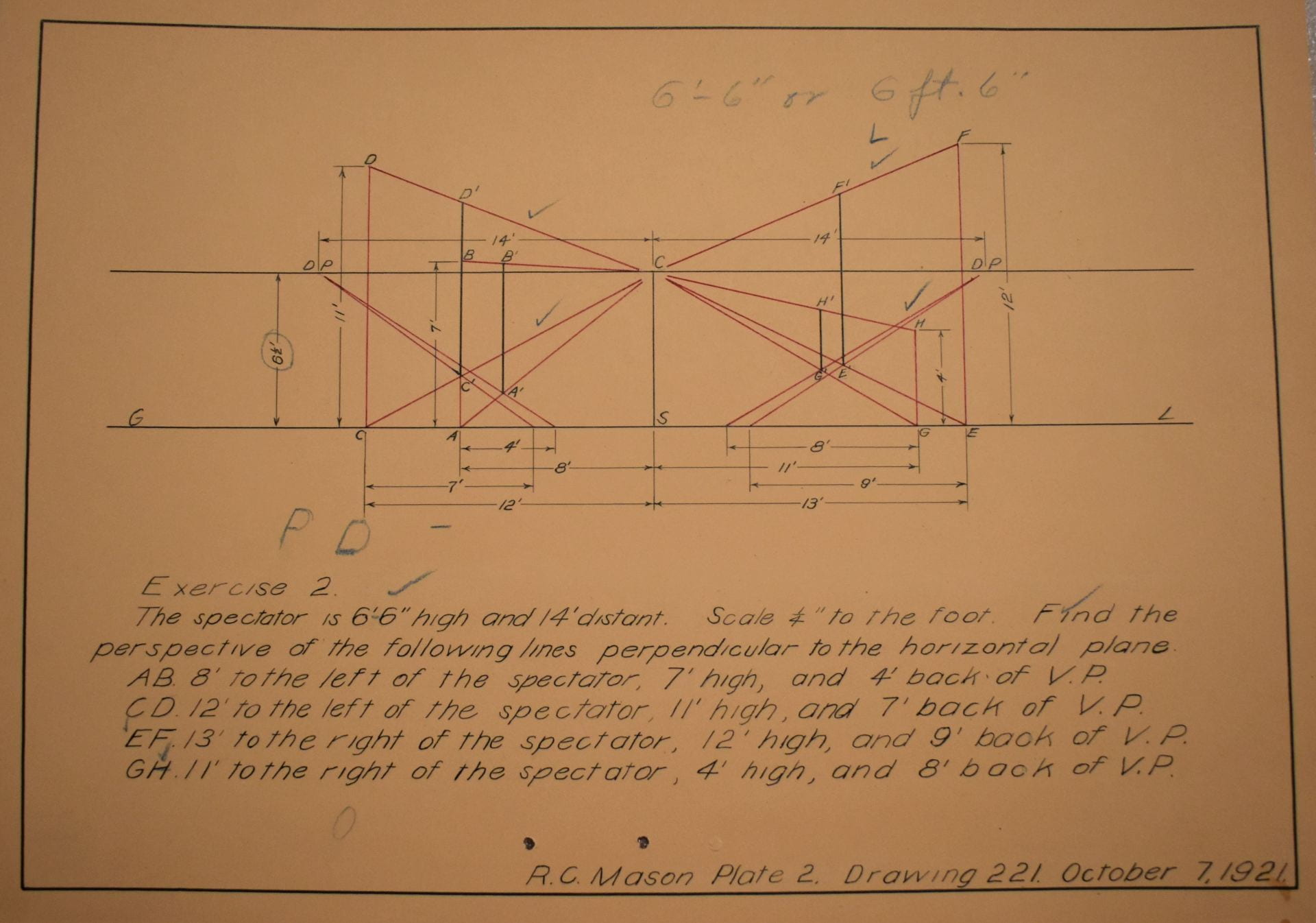
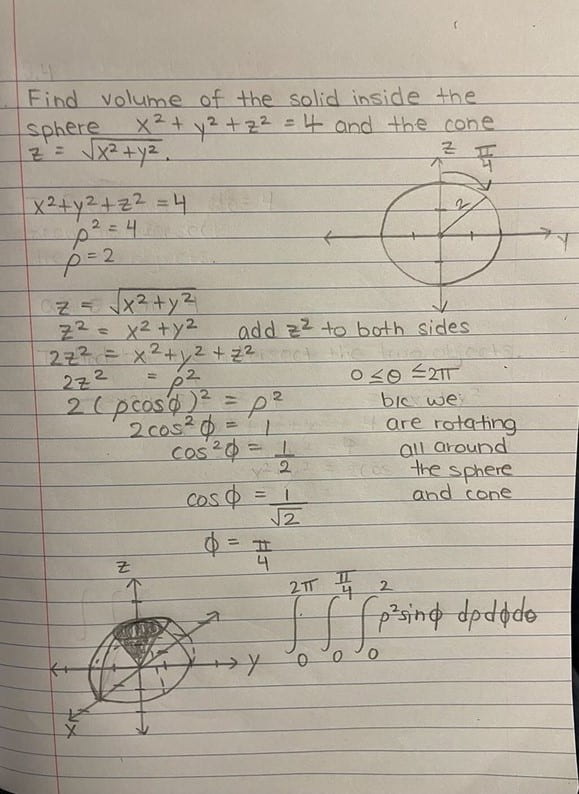
Student Assignments
1921 & 2021
U of A Museum Collections
This page is one of several problems of a homework assignment from 1921 done by engineering student R. C. Mason. The lettering and drawings were all done meticulously by hand. Beside it is an example of a homework problem completed by a computer science student 100 years later, done fall 2021.
How much has the work we do as students at U of A changed after 100 years? What stayed the same?
Co-Curator Ella Scurlock: The homework we do as students defines a lot of the time we spend in college. Our majors become our identity as we navigate college life both academically and socially. I have had to answer the question ‘What’s your major?’ so much that I am sick of it, as I know many students are. However, our majors are the reason we are here. While the work we do here does vary, even within similar disciplines, as shown with these two assignments, the kind of work we do here links us together. After 100 years, we as U of A students are still working together to earn a degree and make our mark on the world. I have found that the dedication of U of A students to not only academics but to each other and to our community as a whole is unmatched.
